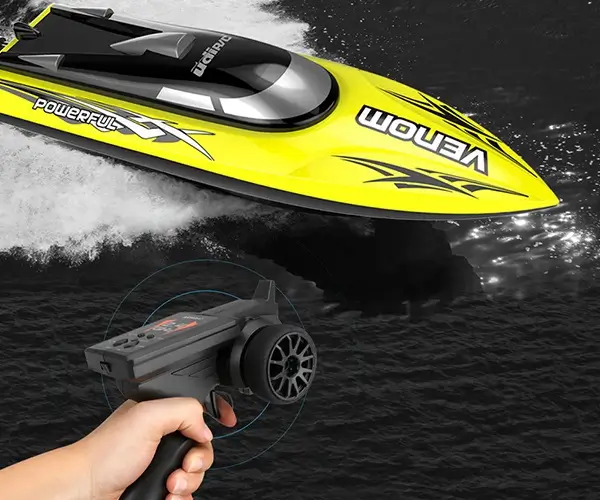Unleashing Precision and Power: The Magic of 12V DC Servo Motors
Imagine a device that can convert electrical energy into effortless, precise movements—a tiny marvel capable of providing responsive control in countless applications. That’s what makes the 12V DC servo motor such an essential component across a growing world of automated systems. These engines, often unseen but always vital, serve as the core drivers behind robotics, remote-controlled vehicles, manufacturing machinery, and even artistic installations.

Understanding the Basics: What is a 12V DC Servo Motor?
At its core, a servo motor is a rotary actuator that allows for precise control of angular position, speed, and acceleration. Unlike standard DC motors, which simply spin continuously when powered, a servo motor is equipped with a built-in feedback system—commonly a potentiometer—that constantly monitors its position and ensures accurate movement. This makes it an exceptional choice for tasks demanding high precision, stability, and reliability.
Specifically, a 12V DC servo motor operates on a fixed voltage of 12 volts, a common standard in many electronic and robotic systems. This voltage level strikes a perfect balance—offering enough power for substantial torque while maintaining efficiency and safety for most applications. The 12V designation also makes these motors readily compatible with typical power supplies used in hobbyist and professional projects alike.
What Sets 12V DC Servo Motors Apart?
While many motor types exist, several characteristics distinguish 12V DC servo motors:
High Precision: With revolutionary control mechanisms, they can execute movements with a degree of accuracy that rivals more complex systems.
Controlled Rotation: Unlike open-loop DC motors that run as long as power is applied, servo motors can rotate precisely to a predefined angle, based on control signals.
Quick Response: Thanks to their control circuitry, they respond rapidly to input changes, ideal for applications requiring real-time adjustments.
Compact Design: Most 12V servo motors are designed to be lightweight and space-efficient—perfect for integration into tight spaces or portable devices.
Versatility: From small hobby robots to industrial automation, these motors are adaptable to a broad spectrum of uses.
Inside the 12V DC Servo Motor: How It Works
Imagine a tiny circulatory system within the motor: the motor’s windings create a magnetic field when energized; a commutator or electronic controller directs this current, causing the rotor—a shaft with attached gears—to spin. The embedded feedback system constantly reports position data back to the controller, allowing internal algorithms to adjust power pulses, ensuring the shaft reaches and maintains the desired position.
This closed-loop control system makes servo motors markedly different from ordinary DC motors. It translates a control signal, often a PWM (Pulse Width Modulation) signal, into precise physical movement. The greater the duty cycle of the PWM, the further the shaft rotates, allowing for fine-tuned positioning.
Applications That Drive the 12V DC Servo Motor Boom
The significance of 12V DC servo motors is evident when exploring the diverse domains they revolutionize:
Robotics: Building intelligent robots that can grasp objects, walk, or manipulate tools relies heavily on servo motors for joint actuation and movement precision.
Remote-Control Vehicles: From cars to boats, these motors enable smooth steering and throttle control, enhancing maneuverability.
Industrial Automation: Manufacturing lines utilize servo motors for conveyor belts, robotic arms, and CNC machinery, where accuracy and consistency are paramount.
Aerospace: Drones and aircraft systems often depend on servo motors for control surfaces and stabilization systems.
Home Automation: Automated curtains, smart locks, and adjustable mounts utilize 12V DC servo motors for seamless operation.
Art and Installations: Interactive exhibits and kinetic sculptures harness these motors to breathe life into creative visions, demonstrating both art and engineering synergy.
Choosing the Right 12V DC Servo Motor
When selecting a servo motor for your project, consider these factors:
Torque: How much rotational force do you need? Higher torque allows heavier loads or more forceful movements but may require a more robust motor.
Rotational Range: Most servo motors have a standard rotation of 180°, but some models can rotate continuously or have extended angles.
Size and Power: Ensure the motor fits your physical constraints and aligns with your power source.
Control Interface: Compatibility with your control system—some use PWM, others use serial or I2C interfaces.
Durability and Environment: For outdoor or industrial environments, look for motors with protective coatings or splash-resistant design.
As your understanding deepens, so does your ability to pick the perfect motor, tailored precisely to your needs—whether it’s a delicate robotic hand or an autonomous vehicle steering mechanism.
Emerging Trends and Innovations in 12V DC Servo Motors
The tech world of servo motors is dynamic and constantly evolving. Innovations include:
Brushless Designs: Offering longer lifespan, less maintenance, and higher efficiencies.
Integrated Sensors: Advanced feedback systems integrated directly into motors for even higher precision.
Smart Control: Connectivity with IoT platforms allows remote monitoring and adjustments.
Miniaturization: Reduced sizes for micro-robotics and wearable devices.
Energy Efficiency: New materials and designs reduce power consumption, making devices more eco-friendly and prolonging battery life.
Conclusion of Part 1
The 12V DC servo motor stands as a testament to how engineering ingenuity can transform a simple motor into a cornerstone of automation and precision control. Its versatility and capabilities continue to influence a multitude of sectors, inspiring innovators to push boundaries further.
Stay tuned for Part 2, where we will explore practical applications, maintenance tips, and future prospects that continue to make 12V DC servo motors an essential part of modern technology.
Kpower has delivered professional drive system solutions to over 500 enterprise clients globally with products covering various fields such as Smart Home Systems, Automatic Electronics, Robotics, Precision Agriculture, Drones, and Industrial Automation.




































